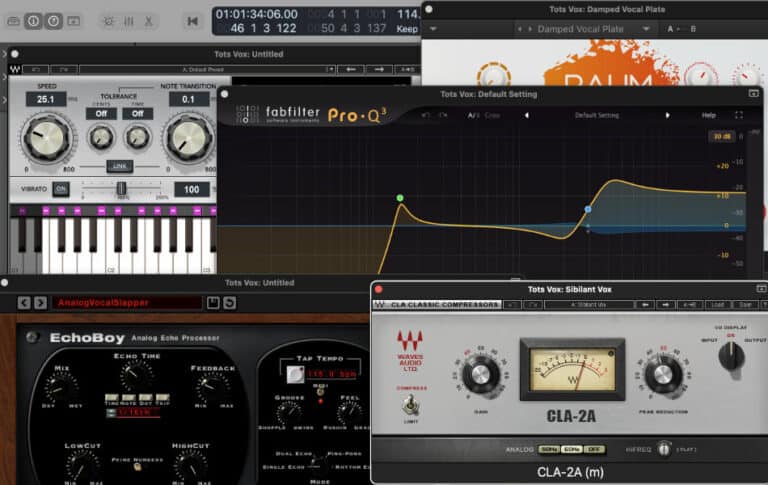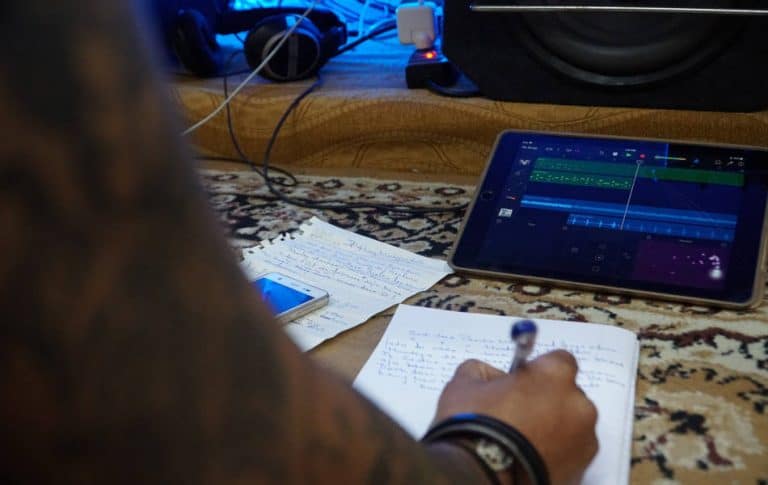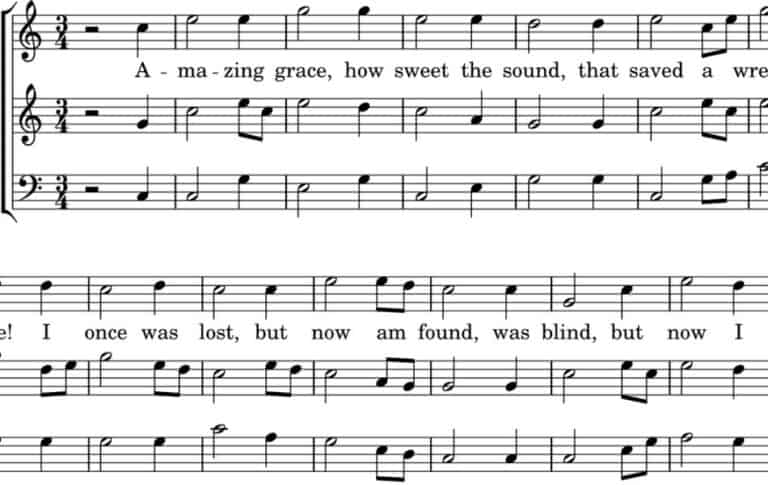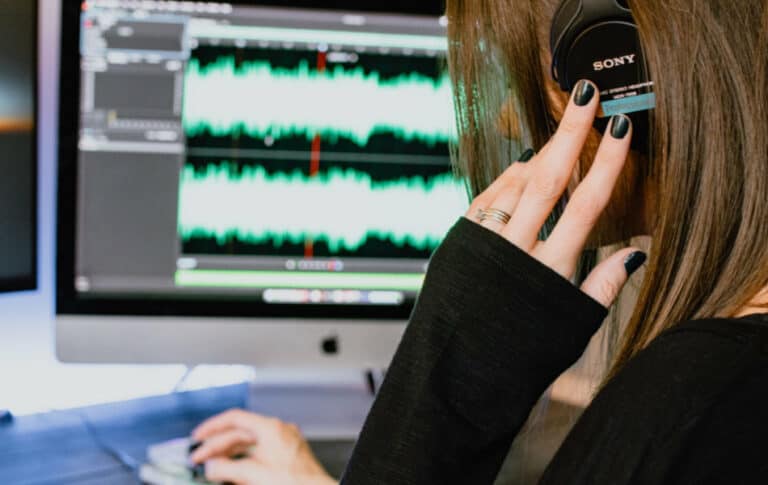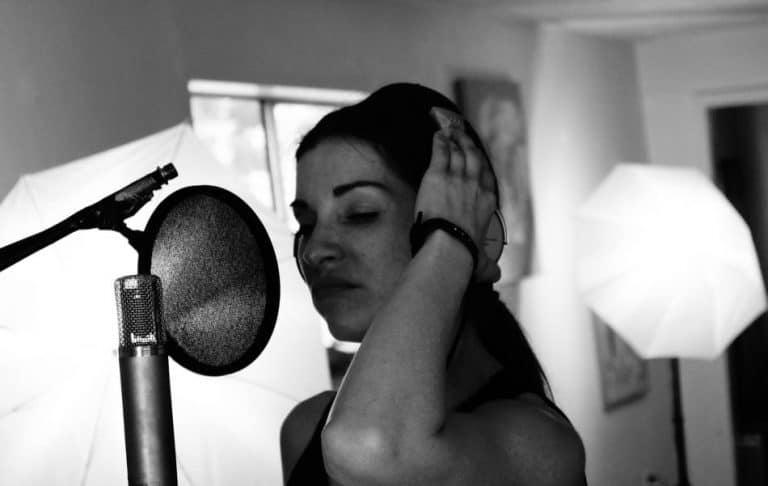How to Improve Your Songwriting Skills and Why It’s Important
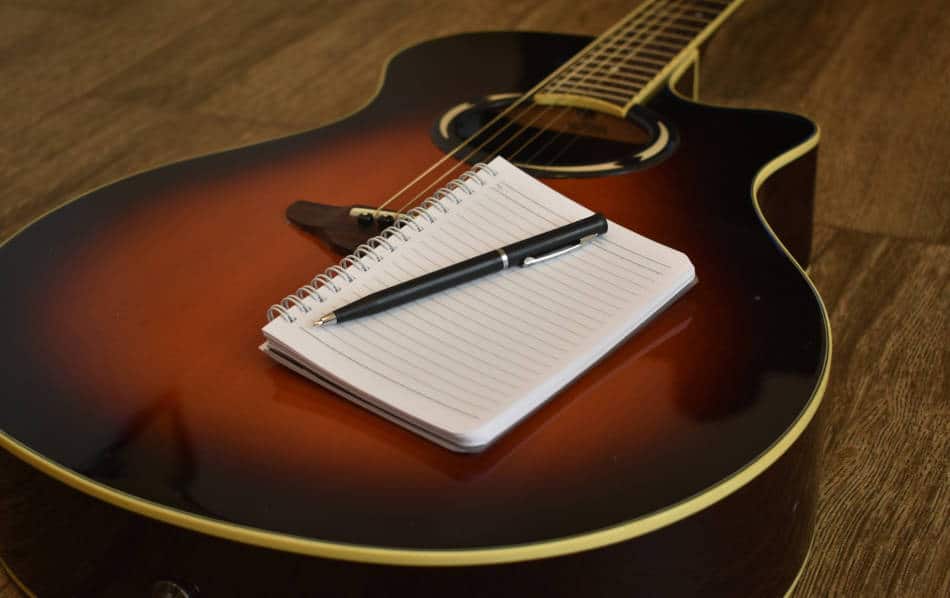
One thing that will really help to make your recording studio a success is being able to write songs. Being a good songwriter will attract singers, musicians and other music producers to you.
It doesn’t matter what type of recording studio you have, or what kind of music you produce, you and your studio will be much more valuable to other people if you are able to write songs. So whatever level you are currently at, you need to improve your songwriting skills.
It All Starts with a Song
As they say in Nashville, “it all starts with a song”. If you look on YouTube you will see many videos with people producing great sounding music, but what’s missing is a good song to base the production on.
Firstly you will need to develop your songwriting skills, and secondly you will need to develop your production skills so that you can turn your song into a finished track.
We’ll talk a little about the production side of things here, but we’ll mostly focus on songwriting, even though sometimes you can’t really separate the two.
In addition to the information below, you might also be interested in our article on how to write a song (10 tips for beginners).
Songwriting Is Changing
Songwriting has changed, or developed, a lot over the last few years. Some of this change is due to the development in music and people’s tastes that happens naturally over time.
A lot of the change is due to the availability of affordable recording technology, which means that you can become a songwriter/producer fairly easily. As the name songwriter/producer suggests, you will need to develop two sets of skills: songwriting and production.
I was at a performing rights organization (PRO) seminar a few years ago and someone asked about the best way to be successful as a songwriter.
By the way, performing rights organizations collect payments on behalf of songwriters from radio stations, iTunes, Spotify and anyone else who needs to pay for the used of their music.
Anyway, the seminar panel members told this guy that in addition to just writing songs he should try to develop his production skills. They said this would help him to do more than just produce some lyrics and a melody (and maybe with some chords to go with it).
Songwriting the Old-Fashioned Way
In the past songwriting the way that songwriting mostly worked was that you wrote the lyrics and melody. Or you did one of these things and collaborated with someone who did the other.
Once you had the lyrics and melody you would make a demo recording. This demo recording only needed to give listeners the opportunity to hear your lyrics and melody, and it didn’t need to sound like a finished production.
You would then send your demo recording to various music publishers or artists’ representatives to see if anyone wanted to record it and release it commercially.
If you were the recording artist as well as the songwriter the demo would be used to give a professional record producer a starting point for your finished track for commercial release.
In the past few years professional-standard recording technology has become widely available. As a result there is now an expectation that demo recordings will be of a very high standard, and having good music production skills lets you as a songwriter produce these demos yourself.
Also, it is now possible to bypass the demo recording stage completely and for songwriters to produce tracks that are ready for commercial release.
What Is a Song Anyway?
When we talk about songs, what do we actually mean? Does it need to have lyrics, and a recognizable structure? If you look in the dictionary the definition of a song is that it’s a sort of poem that has been set to music.
This is where the traditional view of songwriting comes from. A song needs to have lyrics and a melody and everything else relates to production and is a separate thing. But not any more.
Also, for our purposes a song can be a number of different things. It might have lyrics or it might not. The structure of successful songs as they are recorded for commercial release is changing too.
People used to talk about the chorus being the most important part of the song, but now you often hear about “the drop”. It seems that the drop often does the same job in the song that the chorus used to do.
Let’s have a look at some different types of song before moving on to ways you can get better at songwriting.
Traditional Song Structure
You have probably come across the various traditional song structures. They are sometimes described using summaries such as AAA, AABA, verse-chorus, or others. Just in case this is new to you, here’s a very brief explanation of each.
AAA Song Structure
The AAA structure usually refers to a song that has a number of sections (three in this case) that all have the same structure, like three verses. Often at the end of each verse there is short section that is repeated in each verse. This is called the refrain.
Songs with AAA structure are popular in folk and country music where the song tells a story and it’s the story that holds the listener’s interest more than anything else.
AABA Song Structure
AABA is sort of like AAA, with three sections that have the same structure, plus one that’s different.
Since the listener might be getting bored after hearing the first two A sections the third (B) one has a different structure. This might involve a slightly different melody, or the structure of the lyrics might be different.
After the listener’s interest has been restored by this new section the song returns to the final verse with the same structure as the earlier ones.
The lyrics in the B-section, or bridge, often reveals some new information or provide a new perspective on the story told in the lyrics. Again this form is very popular in folk and country music.
By the way, terms like “B-section” and “bridge” can mean different things to different people. Here we are just using it to mean a section that is different to the other three.
Verse-Chorus Song Structure
In a song with a verse-chorus structure the verses tells the story and at the end of each verse is a chorus. This chorus is usually the same each time and often tells the listener what the point of the story is.
Each verse develops the story so the chorus can start to mean something slightly different each time it is heard. You could think of a verse-chorus song as an AAA song with a longer and more exciting refrain.
Verse-chorus songs are very common in all types of popular music. The chorus provides a musical and lyrical hook that catches the listener’s attention and makes them look forward to hearing it each time it is sung.
Verse-Chorus Song with Pre-Chorus and a Bridge
There is often a short section as the song moves from the verse to the chorus called the pre-chorus. This pre-chorus helps to build up the tension and excitement in the song so that the chorus provides a release for the listener.
Verse-chorus songs can also include B-section, or bridge, as described earlier. Since this often lasts for eight bars it is sometimes called the “middle eight”. Here again, this different section often comes after the verse and chorus have been sung twice to keep the listener’s interest and provide some new information or different perspective.
In pop music, after the bridge the chorus is often sung one more time followed by some sort of “outro”, which may involve the chorus being repeated a number of times.
It’s also possible to have another verse and chorus after the bridge, but this can sometimes be too much for the listener who just wants to hear the catchy chorus to the and of the song.
Newer Song Forms
Since about 2010 there have been some changes in the way many popular hit songs work.
Traditionally in pop songs you have a verse, followed by a pre-chorus that builds to the chorus and the big tension release that the chorus brings. Then you repeat this, put in a bridge (or middle eight) to stop things getting boring, and finish off with a repeat of the chorus.
In the last few years hit songs often have a verse, followed by a pre-chorus and the big release is provided by the “drop”, which replaces the traditional chorus.
The drop is usually a big instrumental section that often has vocal parts coming in and out at various points. This may continue with some variation until the end of the song.
It’s a bit like a great big high-energy chorus that doesn’t feel the need to go back to the verse again. You even get this type of song in modern country music as some artists are trying to appeal to broader pop audience.
Instrumental Tracks
Can instrumental tracks be considered as songs? Most definitely, and there are dozens of examples of hit songs that have no vocals. Popular instrumental tracks (or songs) can be found in orchestral, pop and electronic genres of music.
These instrumental tracks may have a recognizable verse-chorus structure, or they might have a different kind of structure altogether. Either way, they will have will have different sections or some other kind of variation through the track to keep it interesting.
How Much Do You Need to Know About Song Structure?
Do you really need to understand all this information about the structure of songs? Yes, you probably do.
Sometimes people think their song isn’t working and they’re not sure why. If you understand the structure of successful songs it can be very helpful.
For example, you may be unconsciously comparing your song to what you might expect to hear of it was a commercially released song. If you understand the type of song that you trying to write it can be much easier to figure out what’s not working. It also makes it much easier to write the song in the first place.
You might already think you know about song structure. I know I did, and I wasn’t really prepared to spend much time learning more about it.
However, on the advice songwriters much more capable than me I have tried to develop my knowledge of song structure and the way songs are written, and it has really helped me a lot.
When I hear very young and very cool music producers talking about their tracks it always amazes me how much of this stuff they seem to know.
They often give the impression that they are just going with the flow and their amazing tracks are produced by instinct alone. But if you really listen to what they say you can tell they really know a lot of the theory behind what they do.
How Do You Get Better at Songwriting?
The short answer to the question of how you get better at songwriting is to do more of it.
Someone asked a top songwriter how they could write more great songs, and the answer was that they should write more bad ones.
What they were saying is that to write better songs you have to write more songs, and you shouldn’t worry too much if some of them aren’t very good.
Just writing songs causes you to get better at doing it. You might also find that you have a song with a great melody but the lyrics are no good, and another song with great lyrics and not a very good melody. So take the good bits from each and create a great song.
Songwriting is a craft skill that you have to learn. You often hear music publishers in Nashville telling writers that they’re “not ready yet”. They know that songwriters need to keep going at it and they will get better.
You Have to Start Writing a Song to Finish a Song
It might seem pretty obvious, but if you don’t start writing a song you won’t end up with a finished song. A lot of people would like to be songwriters but their main problem is they never write any songs.
It seems so obvious – if you want to be a songwriter you need to write songs. Ao many people spend all their time getting ready to write songs, learning about songwriting, buying equipment to help them with their songwriting, but the thing they don’t get around to is actually writing any songs.
Here are some ideas for getting better at songwriting, with a focus on actions that can help you to produce results. A lot of it involves learning, but not just learning for learning’s sake. You need to be doing and learning, and often you can develop a song out of the learning process.
Try Things Out
Just sitting around thinking about writing a song isn’t going to get it written. Knowing how to write a song isn’t going to help you if you don’t actually write something.
With regard to songwriting trying things out is always better than just thinking about things.
Don’t just think about lyrics write them down. Don’t just think about melodies, sing them, play them, record them, get them out of your head somehow.
It’s only when you see or hear your ideas outside your own head that you can start to develop them. It’s much better than just sitting around thinking about it, which won’t get you very far.
Techniques for Starting Songs
Once you decide to start trying things out, as advised above, what actions can you actually take to get started with writing a song, or songs.
You can find plenty of tips on techniques for getting a song started, and I have included some of my favorite ones here.
Start with a Title Idea
A lot of professional songwriters have a “hook book”. They write down ideas for songs in their hook book, as well as snippets of lyrics. One of the most important things they write in the book is title ideas.
A strong song title should catch the listener’s attention, even if they haven’t heard the song yet.
When you are browsing lists of songs on a streaming service like Spotify your eye is often drawn to the title of a particular song. The title may explain what the song is about in an interesting way, or the title might be mysterious and intriguing.
In each case the title has caught your attention and you are more likely to listen to the song. And when you do, the songwriter gets paid. This is what you want for your own songs.
So write down all your title ideas and set aside some time regularly to go through them and see which ones inspire you to write a song.
Draw a Song Plan
Drawing a song plan can help if you have an idea for a song but you don’t have a strong title yet. The song plan is just a diagram that outlines the song so that you have a starting point for writing the lyrics.
You can use one of the song structures we talked about earlier to start your song plan. As an example, let’s use the verse-chorus structure, and include a bridge to help keep the listener’s interest.
Write the following headings on a piece of paper:
- Verse 1
- Chorus
- Verse 2
- Chorus
- Bridge
- Chorus
Under each of these heading write a very brief summary of what that part of the song is about. Once you have the idea for each section of the song you can write the lyrics and develop your plan into a full set of lyrics.
Start with a Riff or Melodic Hook
You have almost certainly heard the story of Keith Richards waking up in the middle of the night with a riff going round in his head. Apparently he quickly sang it into a tape recorder and went back to sleep. When he played the recorded riff in the morning he turned it into the Rolling Stones’ hit song “Satisfaction”.
Another 1960s legend Paul McCartney woke up in the morning with a little tune in his head that he sang to himself using “Scrambled Eggs” as filler lyrics. He then wrote some proper lyrics and the song became “Yesterday”, one of the most successful songs ever.
Imagine if Keith or Paul had not captured and developed their little tunes – these amazing songs would never have been written. Which brings us on to the next suggestion.
Record Everything
Whatever you do as part of your songwriting process, make sure you record it. When you are “trying stuff out” you may not realise you are writing but you are, so don’t lose your work. And don’t think you’ll remember it later, because you won’t.
If you are trying to write using the “strum and hum” method (playing chords and humming a tune) make sure you record everything. Record as you tryout little riffs on a keyboard. When you are improvising over a backing track make sure you record what you sing.
Keep the recorder running all the time. You can play back through it later and delete it all if you like, but don’t run the risk of losing something great that you may never remember if you don’t record it.
Recording doesn’t just mean making an audio recording, it can mean writing things down too.
When you think of an idea write it down. If you hear someone say something interesting, write it down. If you are trying to come up with words that rhyme with a line you have written write them down.
You can read more about why rhyme is important in song lyrics in another article on our website.
Develop Your Lyric Writing Skills
Even though the success of a lot of popular music is driven by the way it sounds, you can’t underestimate the importance of song lyrics.
A song may only have one verse and a pre-chorus before it moves on to a drop that goes on and on for the rest of the song, but the lyrics in the verse and pre-chorus are essential for taking the listener to the drop.
The lyrics will have set the mood of the song and will be in the listener’s mind as they enjoy the whoop-whoop and other seemingly random sounds in the rest of the song.
So learn about song structure, learn about rhyme, and study successful songs in the style you want to write in. And put your learning into practice while you’re still learning it. Start now.
Develop Your Melody Writing Skills
The same goes for melody writing skills. You need a great melody to make the most of your lyrics and establish the mood of the song.
So take time to study the way melody works in successful songs. Look at the way the notes go up and down a step at a time a lot of the time. The way there are little sections of melody, motifs, that repeat and change a little from line to line. How you get some two or three step jumps, and occasionally a big octave jump to inject some excitement.
And don’t just study it, do it. Write little pieces of melody and set your lyrics to them. Introduce some big steps to emphasise various parts of the song and build the excitement. You don’t need to produce a finished song at first, do it bit by bit and you’ll get there.
Develop Topline Writing Skills
A lot of DJs and dance music producers write and record tracks that sound amazing and really get people moving on the dance floor, but they’re not sure how to take their tracks to the next level.
What’s the next level? To make the dance track into a commercial release that will be a hit in the pop music charts.
This is where the “topline writer” comes in. The topline writer takes what is really just a highly produces chord progression and writes a melody and some lyrics for it.
Topline writing is what used to be called songwriting. A song used to be defined by the lyrics and melody and you would get no credit (or payment) if you just came up with the chord progression.
Nowadays with the importance of the track with it’s groove and production values, the track producer will want 50% of the song royalties if the topline writers is established already, and probably a lot more if they aren’t.
If you are able to produce the track yourself and write the melody and lyrics on top, then you get to keep all the money. So this is a skill you can develop on your own, or you can work as a top line writer for other producers.
Master Your DAW and Make Professional Demos
Whether you are just making demo recordings of the songs you write or you want to produce commercial quality recordings for yourself or other artists, you need to master your DAW software.
Remember that even if you start off with the intention of making a demo recording of a song to play for people, that recording might end up being the finishes article.
Also, we were talking just now about becoming a top line writer and working with track producers and DJs. How about you becoming the track producer and you working with top line writers?
That’s another possibility. So spend some time mastering your DAW software and recording equipment.
Collaborate with Other Writers, Musicians and Producers
The last suggestion is to collaborate. We just looked at collaboration between a track producer and a top line writer, but it’s also a great idea as a songwriter to collaborate with other songwriters.
It could be a collaboration between a lyric writer and a melody writer, or to collaborators could each do both. And it doesn’t have to be two people collaborating, you can collaborate with as many people as you like to write a song.
There’s a very successful songwriting team in the UK called Xenomania. They seem to work as a regular team and the different members of the team write different parts of songs. Then they all meet up to decide which parts they want to develop into a particular song.
Then, as a team, they put the parts together and develop them into the final song before making highly produced demo recordings.
Start Your Songwriting Journey Today
There’s no time like the present, so take the first step to developing your songwriting today.
Have a look at lyrics you have written in the past and see if there’s anything you like and could develop. Listen to recordings you have made in the past and find things that you could work on. Do you have an instrumental track you could write lyrics and a melody over.
You could maybe enter a songwriting competition as a way to provide some motivation (we have an article on whether songwriting contests are worth entering).
Start writing new stuff. Record it. Get it out there. I look forward to hearing it.
